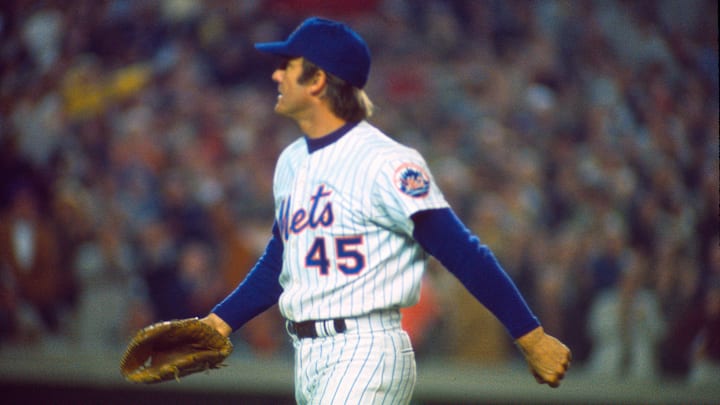Ya Gotta Believe…yes…ya just gotta. There’s always hope. There are ups and there are downs. And 1973 proved to be one of those seasons where you could hold out hope…right up until the last minute…and then something good would happen. Those 1973 New York Mets did just that. But excitement and historical comeback…leading to a World Series berth…essentially led to one of the worst years in Mets history…and a very dark period for the organization.
The Mets should have, on paper, been primed for a return to post season play. Just about everyone, with the exception of Willie Mays, was returning. Manager Yogi Berra would trout out the same starting eight position players that were so reliable and clutch during the ’73 pennant drive. But somewhere, it all went bad. How bad? Well…some of it may be a bit of a surprise.
Let’s start with what should have been a given…the dominance of a great pitching staff. After all, it was the pitching that was the backbone of the Mets and everything that was good about the organization, right? Uh….no.
The biggest culprits? The savior, Tug McGraw, had the worst season of his Mets career. He finished with a record of 6-11, 4.16 ERA, and a mere three (3) saves. And George Stone…the surprise of the ’73 staff, the throw-in the “Felix Millan” trade…went from a 12-3 record and 2.80 ERA in 1973 to a 2-7 and 5.03 ERA in ‘74.
Tom Seaver…The Franchise…had what would be HIS worst season of HIS Mets career with a mortal record of 11-11 and 3.20 ERA, while missing four starts due to sciatic nerve issues.
The New York Mets pitching staff, the annual strength of the team, was going to be needing the offense to pick them up, rather than the usual other way around.
The Mets had done some pummeling of the Pittsburgh Lumber Company and the Big Red Machine, and even went toe to toe with the powerful Oakland A’s in 1973. So it would be sort of reasonable to think that the hitting could, for once, carry the club. Uh…no.
Every player, every position player, had a down year, and rather than having an uptick from the season before, they had a drop-off. Catcher Jerry Grote, first baseman John Milner, second baseman Felix Millan, shortstop Bud Harrelson, third baseman Wayne Garrett, left fielder Cleon Jones, centerfielder Don Hahn, and even right fielder Rusty Staub…all the regulars…all pedestrian at best. It was a perfect storm.
How bad were they? In a league of 12 teams, they were 11th in runs scored, 11th in hits, last in doubles, last in triples, believe it or not 8th in home runs with only 96, last in stolen bases, 11th in batting average and 11th in on base percentage.
And remember when they lost and it used to be fun? Well, this time around, it wasn’t. It was brutal and painful enroute to losing 91 games, the first losing season since before the Miracle Mets of 1969. And although the team briefly rebounded for the 1975 season, it was all downhill from there.
It was that 1974 season that so began one of the darkest eras in New York Mets history. And it perhaps could have been avoided if Mets management hadn’t erroneously believed that the huge turnaround and push to a World Series 7th game in 1973 wasn’t the reality and the foundation of some dynasty. The A’s were the dynasty of that era…having been in the post season in four consecutive seasons. The Mets…were heading into the abyss.
The front office made a huge error in judgment 50 years ago. Rather than keeping the core and continuing to build, they believed that they already had all of the right pieces and made no changes to upgrade the parent team or anywhere else in the organization. And it took a while before “the magic was back.” Hopefully this regime doesn’t make that same error.
